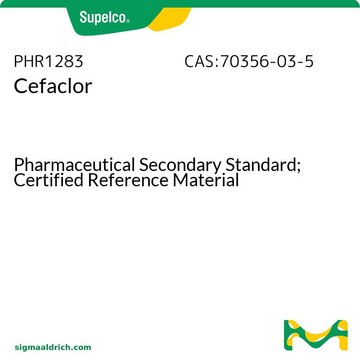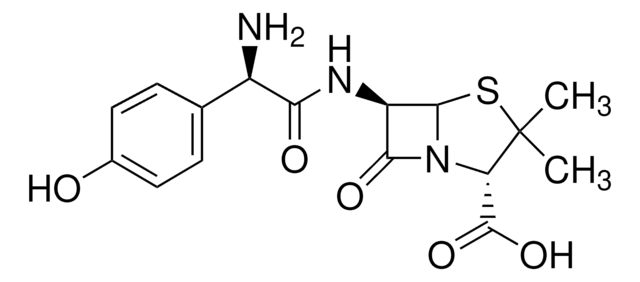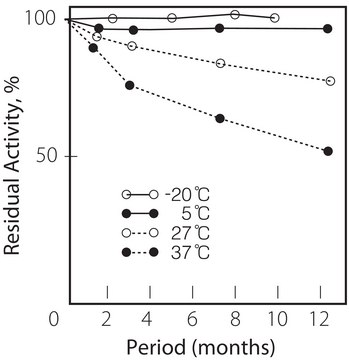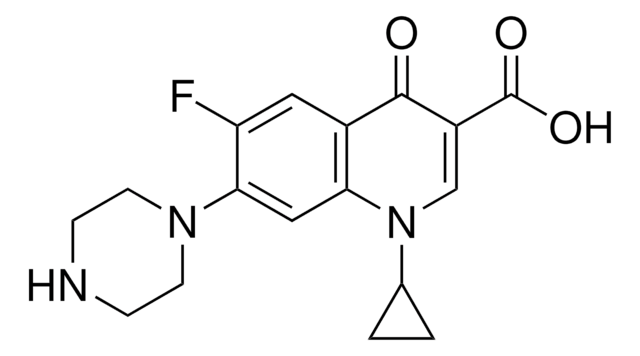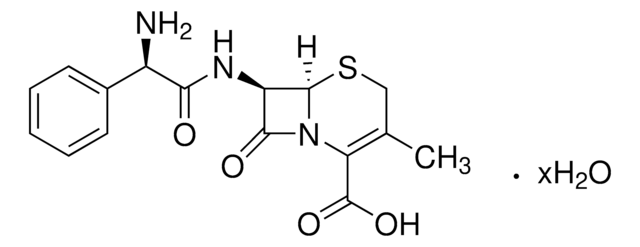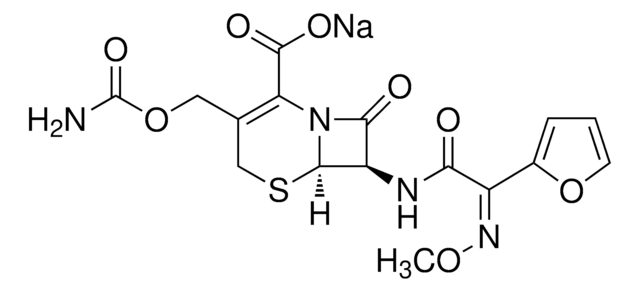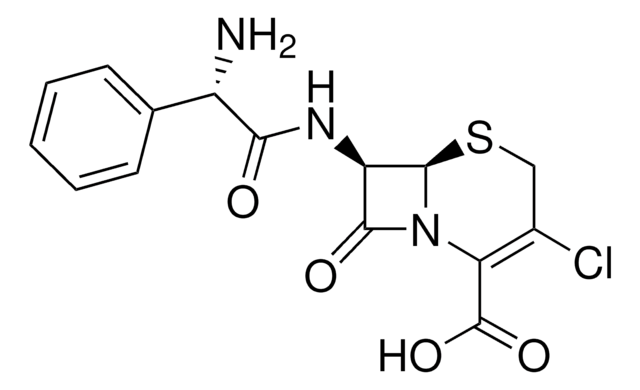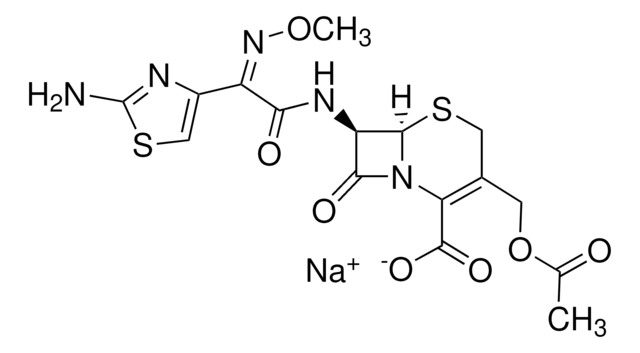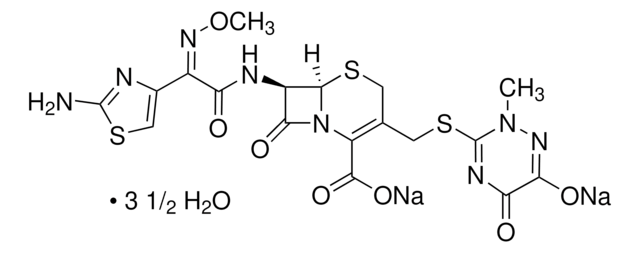C6895
Cefaclor
Synonym(s):
7-(D-2-Amino-2-phenylacetamido)-3-chloro-3-cephem-4-carboxylic acid
About This Item
Recommended Products
form
powder or crystals
Quality Level
solubility
soluble (slightly soluble in water, practically insoluble in methanol, ethanol)
antibiotic activity spectrum
Gram-negative bacteria
Gram-positive bacteria
Mode of action
cell wall synthesis | interferes
SMILES string
N[C@@H](C(=O)N[C@H]1[C@H]2SCC(Cl)=C(N2C1=O)C(O)=O)c3ccccc3
InChI
1S/C15H14ClN3O4S/c16-8-6-24-14-10(13(21)19(14)11(8)15(22)23)18-12(20)9(17)7-4-2-1-3-5-7/h1-5,9-10,14H,6,17H2,(H,18,20)(H,22,23)/t9-,10-,14-/m1/s1
InChI key
QYIYFLOTGYLRGG-GPCCPHFNSA-N
Looking for similar products? Visit Product Comparison Guide
General description
Application
Biochem/physiol Actions
Other Notes
Storage Class Code
11 - Combustible Solids
WGK
WGK 2
Flash Point(F)
Not applicable
Flash Point(C)
Not applicable
Personal Protective Equipment
Regulatory Information
Choose from one of the most recent versions:
Certificates of Analysis (COA)
Don't see the Right Version?
If you require a particular version, you can look up a specific certificate by the Lot or Batch number.
Already Own This Product?
Find documentation for the products that you have recently purchased in the Document Library.
Our team of scientists has experience in all areas of research including Life Science, Material Science, Chemical Synthesis, Chromatography, Analytical and many others.
Contact Technical Service